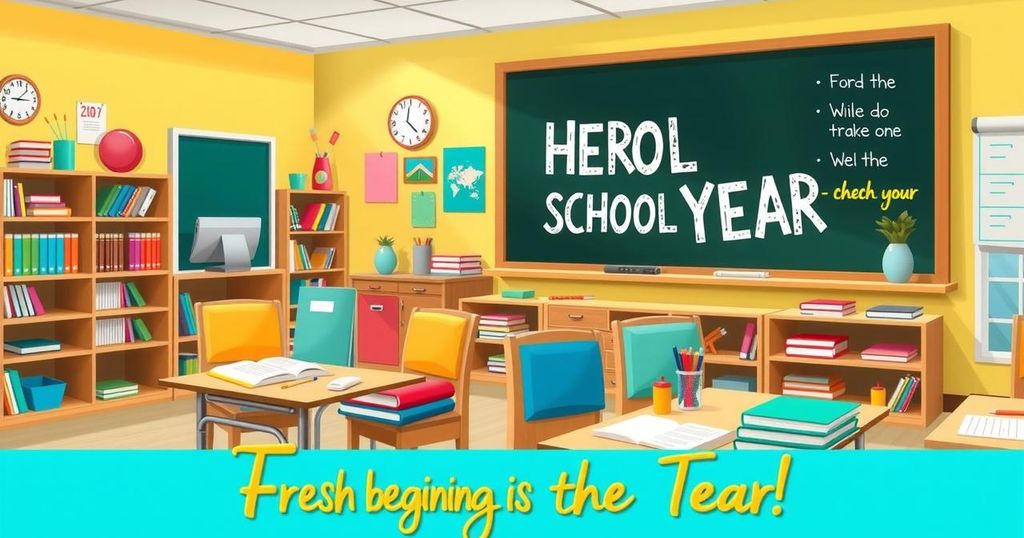Peru’s 2025 school year has begun amid significant challenges, including political unrest and educational deficiencies. Public backlash against President Dina Boluarte highlights dissatisfaction with leadership, while alarming statistics reveal many schools require urgent repairs. Additionally, escalating crime rates and local governance issues compound the nation’s struggles, leaving citizens eager for change and resolution.
As Peru commences the 2025 school year, it faces substantial challenges rooted in educational deficiencies and political unrest. President Dina Boluarte’s attempt to convey a commitment to education at the G.U.E. Inc. Garcilaso de la Vega school in Cusco was met with public outcry, reflecting a significant loss of support for her administration. Reports from the Comptroller’s Office indicate that 57 schools in the Cusco region are under scrutiny for various deficiencies, raising concerns about education quality and student safety.
Former President Martín Vizcarra has voiced his concerns regarding the political climate impacting education. During a visit to Huancayo, he noted a decline in electoral support for Keiko Fujimori, attributable to the recent passing of her father, Alberto Fujimori. Vizcarra criticized the coalition government led by Boluarte, characterizing it as riddled with failures and incapable of addressing the pressing issues faced by the education sector.
In Juliaca, students of school No. 70549 “Virgen del Carmen” began the school year outdoors due to classroom flooding. School director Rolando Aréstegui Apaza emphasized the urgency of securing 15 million soles for reconstruction efforts. Parents have protested against local government inaction regarding necessary infrastructure improvements, further highlighting the dire state of education facilities.
According to Ayacucho’s Ombudsman, Wilber Vega Mendoza, 63% of schools in the region—1,820 out of 2,864—require complete rebuilding. He pointed out that over half lack the fundamental conditions for a safe learning environment, with 60% of schools failing to meet basic legal sanitation standards, complicating repair funding requests.
Crime rates have surged alongside educational shortcomings, as evidenced by two violent incidents in Trujillo, La Libertad. One woman was shot after withdrawing cash, while another victim was murdered in his car, prompting local Governor César Acuña to question the efficacy of safety measures being implemented in the area.
In Lambayeque, the detonation of tear gas at the Aventura nightclub caused injuries among attendees. Uncertainty looms as local authorities investigate how the gas canister penetrated the premises, prompting the municipal government to close the venue.
Adding to the complexities, the Maynas Provincial Municipality of Loreto struggles to collect municipal fees for 2025 due to the repeal of relevant ordinances by the city council. Revenues manager Juan Carlos García Mimbela reported that the situation jeopardizes public services and has left citizens uncertain about their payment obligations. As these overlapping issues of governance, crime, and educational inadequacies persist, Peru’s new school year unfolds under a cloud of discontent and uncertainty regarding leadership accountability.
The initiation of Peru’s 2025 school year unveils a series of pressing challenges marked by educational inadequacies and political instability. Public discontent is evident, as citizens and leaders alike call for urgent actions and accountability to address a deteriorating educational environment, rising crime rates, and ineffective governance. Citizens are left hoping for swift reforms and improvements as they navigate the complexities facing their communities.
Original Source: evrimagaci.org






